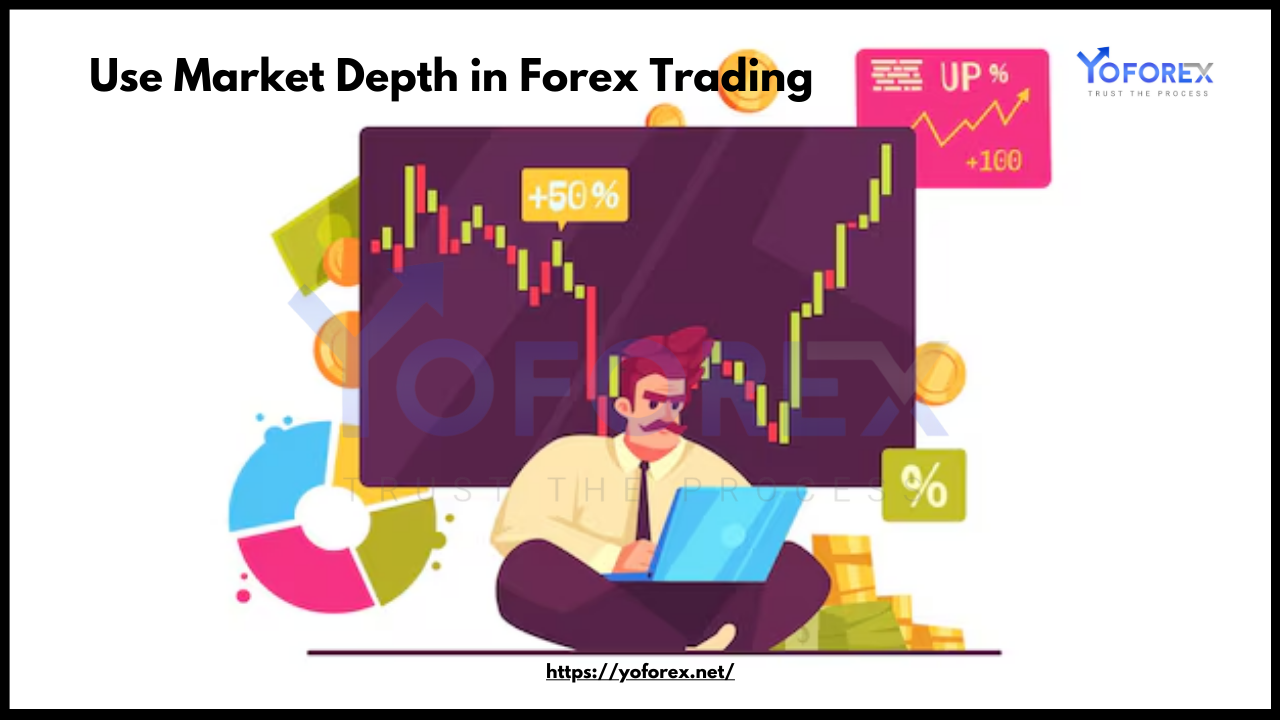Market depth is a crucial tool in forex trading that provides valuable insights into a particular currency pair’s liquidity and order flow. It helps traders make informed decisions by displaying real-time supply and demand levels. Understanding market depth can enhance a trader’s ability to predict price movements, identify support and resistance levels, and execute trades efficiently. This article explores how traders can use market depth in forex trading to gain a competitive edge.
What is Market Depth?
Market depth, also known as the Depth of Market (DOM), is a real-time display of the buy and sell orders available in a specific currency pair at different price levels. It shows the number of pending buy (bids) and sell (asks) orders in the market.
Market depth is often visualized in a Level 2 market data format, which allows traders to see beyond just the bid-ask spread. It provides transparency regarding how much liquidity is available at each price point, helping traders gauge market sentiment and potential price movements.
How Market Depth Works
Market depth works based on order book data, which consists of limited orders placed by traders. These orders create layers of liquidity at different price levels. A typical market depth chart consists of:
- Bid Orders (Buy Orders): These orders indicate the prices at which traders are willing to buy a currency pair.
- Ask Orders (Sell Orders): These orders show the prices at which traders are willing to sell a currency pair.
- Volume: The number of orders at each price level, indicating the market’s liquidity.
When a large volume of buy or sell orders accumulates at a certain price level, it can act as support or resistance. If the buy orders outweigh the sell orders, the price is likely to increase, and vice versa.

Importance of Market Depth in Forex Trading
Using market depth effectively can provide numerous advantages to forex traders:
1. Identifying Support and Resistance Levels
Market depth allows traders to spot key levels where large buy or sell orders are concentrated. These levels act as strong support or resistance, helping traders set entry and exit points more accurately.
2. Assessing Liquidity
Liquidity is crucial in forex trading. By analyzing market depth, traders can identify highly liquid price levels where they can execute trades efficiently without significant slippage. High liquidity generally leads to tighter spreads and better order execution.
3. Detecting Order Flow and Market Sentiment
Observing how buy and sell orders shift over time helps traders understand market sentiment. A growing number of buy orders may indicate bullish sentiment, while an increase in sell orders may suggest bearish sentiment.
4. Avoiding Market Manipulation
In less liquid markets, large traders (whales) may place fake orders to manipulate prices. By analyzing market depth, traders can spot unusual order book activity and avoid potential traps set by large institutions.
5. Executing Trades More Efficiently
Market depth helps traders choose optimal price levels to enter or exit trades, reducing slippage and improving trade execution. Scalpers and day traders, in particular, benefit from this feature.
How to Use Market Depth in Forex Trading
1. Using a Trading Platform with Market Depth Feature
To leverage market depth, traders should use trading platforms that offer Level 2 market data. Platforms like MetaTrader 5 (MT5), cTrader, and NinjaTrader provide built-in market depth tools.
2. Analyzing Order Book Patterns
- Thin Order Books: A market with low liquidity (few orders at each level) is more volatile, making it susceptible to large price swings.
- Thick Order Books: A market with high liquidity (many orders at each level) is more stable and experiences smoother price movements.
3. Spotting Large Orders (Order Clusters)
Traders should look for large clusters of buy or sell orders, which can indicate strong support or resistance levels. When the price approaches these levels, traders can anticipate potential reversals or breakouts.
4. Watching for Order Flow Changes
By tracking how orders are being added or removed, traders can gain insights into short-term price direction. For example, if a large number of buy orders suddenly disappear, it may signal weakening bullish momentum.
5. Combining Market Depth with Other Indicators
To improve accuracy, traders should combine market depth with other technical analysis tools such as:
- Moving Averages for trend confirmation
- Bollinger Bands for volatility assessment
- RSI and MACD for momentum analysis
Limitations of Market Depth
While market depth is a valuable tool, it does have some limitations:
- Does Not Reflect Market Orders: Market depth only shows limit orders, not market orders, which can impact prices significantly.
- Order Spoofing: Some traders place fake large orders to create false market sentiment.
- Less Effective in Fast-Moving Markets: During news events or high volatility, market depth can change rapidly, making it difficult to use effectively.
Conclusion
Market depth is a powerful tool for forex traders looking to gain deeper insights into market liquidity and order flow. By understanding support and resistance levels, analyzing order book patterns, and integrating market depth with other technical indicators, traders can make more informed decisions. However, it is important to be aware of its limitations and use it in conjunction with other trading strategies for the best results. Whether you are a beginner or an experienced trader, incorporating market depth analysis into your trading approach can enhance your ability to navigate the forex market efficiently.
Stay Updated & Download: https://yoforex.net/use-market-depth-in-forex-trading/
😎 Happy Trading 😎

